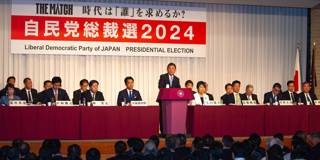
The Nine-Horse Race to Lead Japan
Following Japanese Prime Minister Fumio Kishida’s unexpected decision not to seek re-election, nine candidates to lead the ruling Liberal Democratic Party have emerged. They represent a range of political, economic, and social perspectives, highlighting the breadth of the LDP’s ideological spectrum.
TOKYO – Nearly two months after Japanese Prime Minister Fumio Kishida announced his decision to step down, the ruling Liberal Democratic Party is set to elect a new leader. With the LDP controlling the lower house of parliament (the Diet), the winner will automatically become prime minister, potentially reshaping the country’s political landscape.